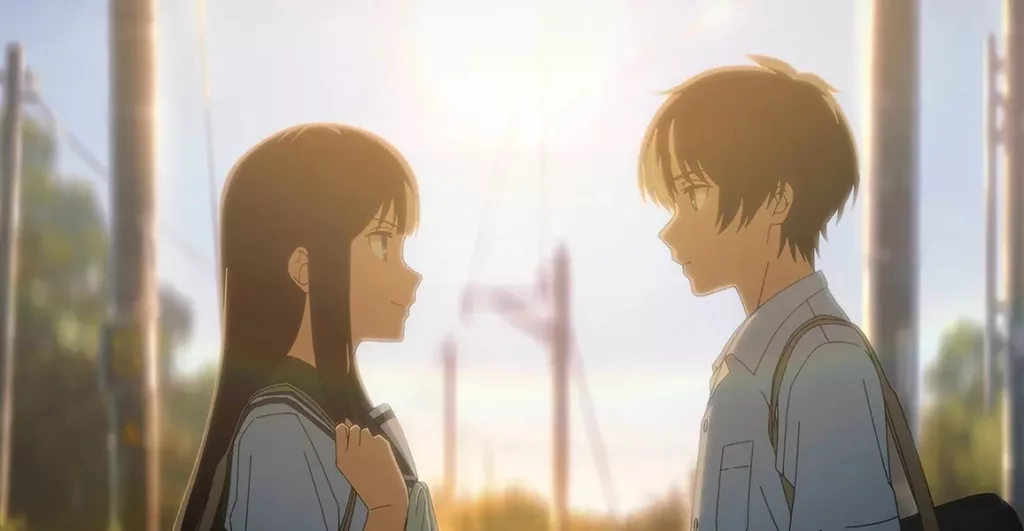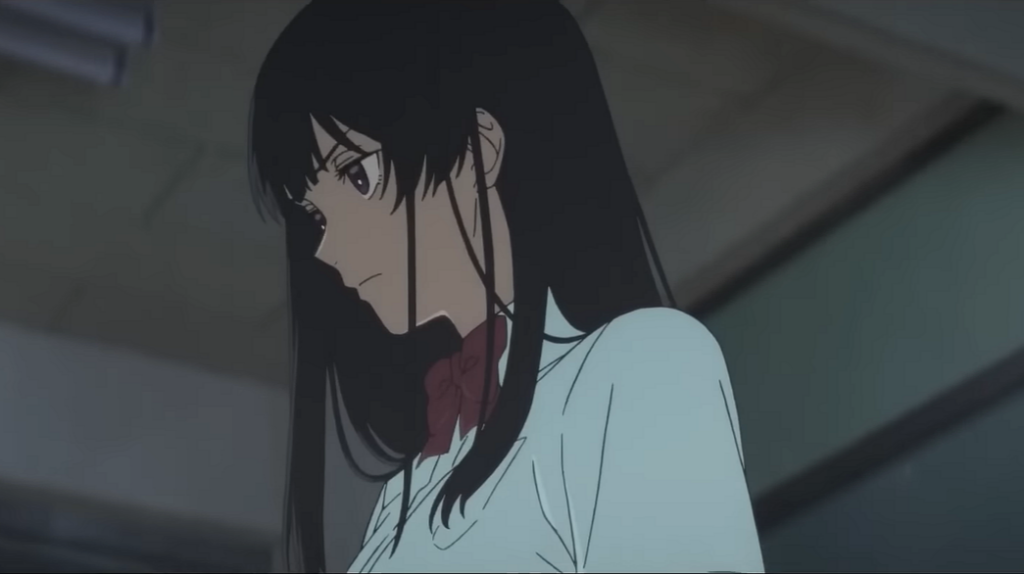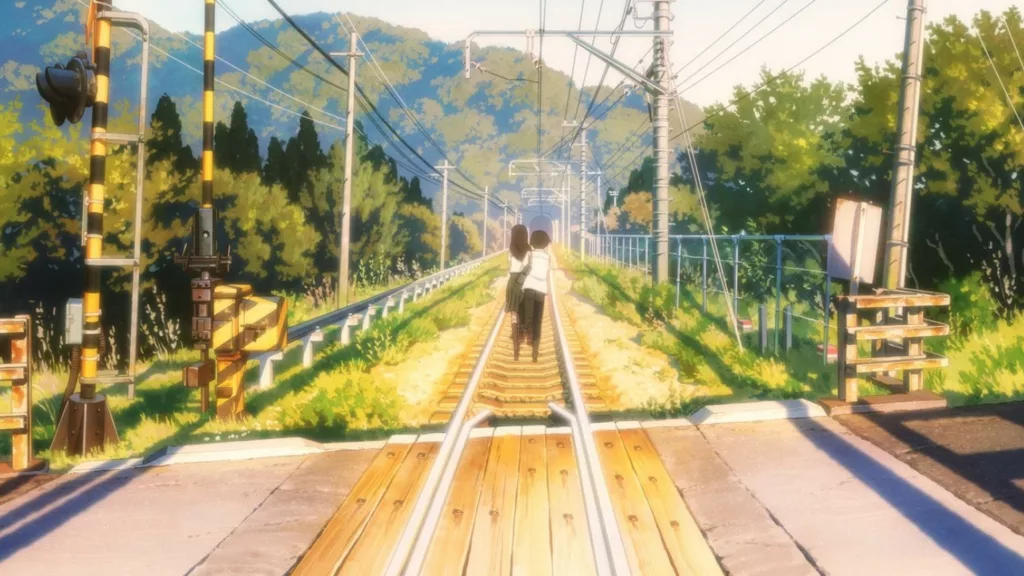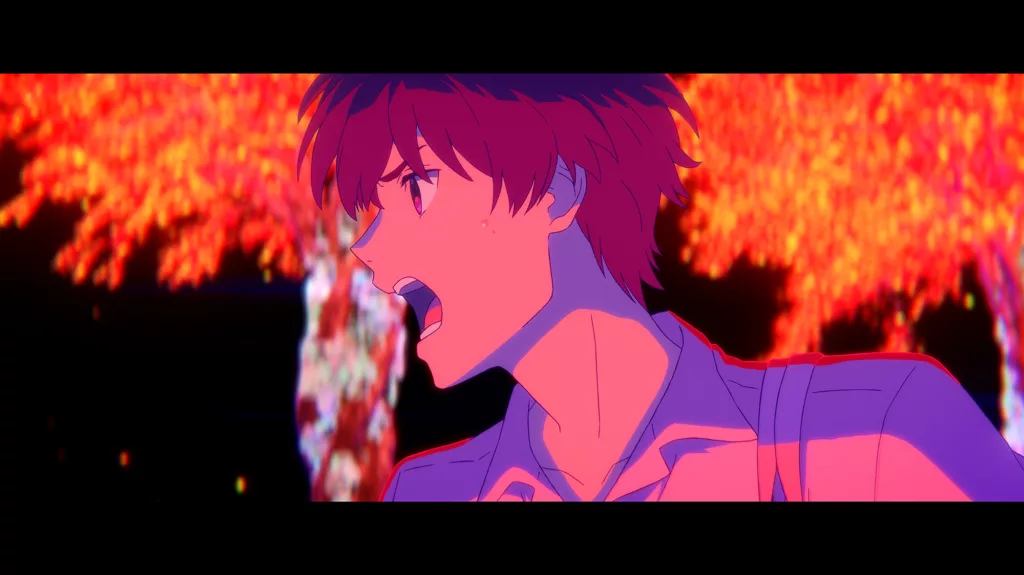Deep in the countryside rests an ancient tunnel rumored to bend the very rules of time. Here, two lonely souls, Kaoru and Anzu, seek refuge from lives shaken by grief. Shy and withdrawn, Kaoru is still gripped by the loss of his sister from years ago. Bold and creative, Anzu follows in her artist grandfather’s footsteps despite her family’s disapproval.
When Kaoru discovers the tunnel‘s ability to seemingly grant wishes, he shares this marvel with the intriguing Anzu. Perhaps here they can confront old wounds. Testing the tunnel’s powers, they soon find hope burgeoning alongside understanding. Yet with each step inside, weeks slip by outside unnoticed.
As their bond grows and feelings awaken, Kaoru and Anzu must unravel the mysteries of the past and choose between facing wounds anew or living haunted by “what if.” Adapted from a popular light novel, this tale of first love amid magical realism joins a recent surge of critically acclaimed anime exploring the profound yet familiar highs and lows of youth. For these two, a summer in an enchanted cavern might just open doors to new beginnings.
Characters Lost in the Tunnel
Our two protagonists have certainly seen their share of gloom. Kaoru still bears deep scars from the tragedy five years ago. His bright young sister Karen met a tragic end—an event their father blames Kaoru for daily with drunken fists. With his mother long gone as well, Kaoru walks through life as an empty shell.
Then comes the fiery Anzu, who ignites a small flame in Kaoru’s heart. Though new in town, her painful past mirrors Kaoru’s isolation. Where family should offer love, Anzu found only abandonment for daring to follow her passion instead of their plans. Now she walks her own lonely path, with art as her sole comfort.
These darkened souls yearn for light and find a gleam in each other. Yet for all their perceptive understanding, Kaoru and Anzu stay strangers to themselves, shells untouched within. They articulate agony well, but their inner lives lack definition. We grasp their plight, yet not their person.
Supporting characters are no better. A bully arrives only to assault and vanish, with no traits beyond meanness. Parents exist to deepen damage in the boldest of strokes before retreating into nothingness. Minor roles bring a minor contribution, neglecting the chance to enrich the whole.
Potential lies untapped within these depths. Great pain cries out for great personality to shine through its shadow and give shape to such suffering. But characters here linger in outline, never stepping forth as people in their own right. Their tragic tales move us, but, as people, they remain as opaque as the enigmatic tunnel at the core of their confused hearts.
The Alluring Tunnel’s Mystical Realm
At the heart of this tale lies a most curious concept. This tunnel, spoken of in legend, can actualize any longing, so the story goes. Yet its passage comes at a cost; for each moment one lingers within its glow, days beyond count pass by without. It’s a notion sure to spark imagination—this magic place where hours dissolve but wishes flourish.
 Rendered with remarkable imagery, the tunnel stands as the film’s prime allure. Vivid hues swath its space—leaves of burning orange drifting upon waters of gentle flow. Tall trees bow on either side in a painted procession, their blooms spilling colorful petals like rainfall. An atmosphere of mystery and mystique pervades this surreal sanctuary. One feels pulled deep into its remarkable realm simply by gazing upon its beauty.
Rendered with remarkable imagery, the tunnel stands as the film’s prime allure. Vivid hues swath its space—leaves of burning orange drifting upon waters of gentle flow. Tall trees bow on either side in a painted procession, their blooms spilling colorful petals like rainfall. An atmosphere of mystery and mystique pervades this surreal sanctuary. One feels pulled deep into its remarkable realm simply by gazing upon its beauty.
Elsewhere in the film, visual splendor finds less success taking form. Character designs stay straightforward, with nary a novel or notable trait among the cast. Settings showcase competence but lack the tunnel’s arresting personality. Moments of stillness offer reprieve, their serene scenes of shore or sky lit softly with feeling. Yet on the whole, this realm outside the tunnel fails to ignite the imagination like the enchanted passage at the core of our two leads’ quest.
The tunnel alone emerges as a true inspiration, its hypnotic habitat immortalized in elegant strokes of art. One longs to linger in its eldritch embrace, where hours flee but hopes flourish in vivid splendor on screen. It is here that this tale’s treasure surely waits, gleaming within a magical domain no imagination could duplicate.
Untapped Potential: The Tunnel’s Unrealized Story
This tale certainly sparked the imagination with its mystical tunnel-granting dreams. Yet for all its promise, the plot remained disappointingly superficial. Such an intriguing concept deserved deeper development, but key mysteries went frustratingly unsolved.
Take the tunnel itself—surely the heart of the story. But so little time was spent within its glow, revealing nothing of its true workings. We learn it can reshape reality, but how? Viewers were left hungering to know more about its magic.
What’s more, the budding romance felt woefully rushed. From shy strangers to loved-ups in an instant, their bond never rang entirely true. When feelings emerged, the leads’ prior lack of chemistry made sweet moments feel artificially achieved.
Chance brought our two wounded souls together. But with only surface wounds explored, their healing belonged more to textbooks than truth. Backstories surfaced but scarcely sank beneath the skin. As a result, viewers struggled to fully feel for characters who felt partly formed.
The climax also fell flat, resolving less like an answer than a shrugged question mark. Dreamlike imagery stirred imagination yet clarified nothing. Loose ends wound up merely loose, tied with sentiment but not satisfactory answers.
This film clearly held flickers of magic within its soul. But to fully cast its spell, it required breathing more life into its people and pouring mystery’s light into every darkened nook of its fantasy world. With attention paid to truly tapping that potential, its story could have become much more than the superficial shadows it remained.
Fantasy and the Fragmented Self
At its heart, The Tunnel explores how we use fantasy to process grief. Protagonist Kaoru still mourns his late sister deeply, hoping the tunnel can remedy his loss. It gives form to the impossible scenarios that grief spurs us to imagine.
We see this theme embodied in Anzu too. Her creator’s self-insert status becomes more poignant; she envisions manga as an escape from abandonment. Though her writing faces constant insecurity, within fantasy, she finds freedom and control.
What’s striking is how personal these concepts feel. We glimpse Anzu’s raw vulnerability in her private sketches, her pain and passion resonating with the familiar desperation all artists know. Hachimoku injects sincerity by channeling themselves into her.
It gives the film weight, giving fleeting fantasy substance. We believe wholly in these characters’ interior worlds because they ring so true to their lived experiences of fractured selves yearning to heal. Hachimoku bids us to see glimpses of their genuine souls beneath surface wounds.
While not perfect, The Tunnel succeeds most in its intimate portrayal of fantasy as catharsis. Facing grief means facing ourselves—our hopes, fears, and fragmented hearts. Through these very human characters, the film explores how we piece ourselves together, one imagined recreation at a time.
Resonance Amid Familiarity
The Tunnel taps into poignancy at key moments, crafting scenes that linger with emotion. When the climax reveals Kaoru and Anzu’s intertwining histories of abandonment and loneliness, separating pain from person, it cuts deep. Here, the intimate storytelling Hachimoku brings finds its mark.
Elsewhere, simplicity serves the film well. Sparse locations like the train platform emerge vividly from minimal details. The surreal glow of the tunnel entrance, engulfed in orange leaves floating on water, immerses viewers in its mystery. In skilled hands, small strokes can conjure big feelings.
However, beyond these high points lies a narrative that feels franchise-formulaic. From the tale’s building blocks to its progression of meetings and relationship stages, viewers see the blueprint. Character archetypes like the angry father and mean girl rely on recognition over substance.
With just over 80 minutes, there’s no space to flesh out archetypes into people. Rushed pacing jars the romance from platonic to romantic, severing its logic. Backstories dump exposition instead of unfolding naturally.
While entertaining, this familiarity limits investment. We don’t really know or understand the characters beyond their prescribed roles. Their desires in the tunnel remain vague, their mystery unproved.
The film flashes potential but falls back on tropes that fail to transform. With more time exploring its concepts and individuals, it could have transcended the ordinary. As it stands, the tunnel resonates in fleeting moments amid its unfulfilled possibilities.
Potential Only Partially Realized
The Tunnel to Summer shows glimpses of truly magical storytelling. Its premise taps into deep longings, and vivid tunnel scenes immerse viewers in wonder and mystery. More time here could have unlocked this tale’s depths.
Kaoru and Anzu also spark interest, though their relationship changes too fast to feel genuine. With room to flesh out nuances in their backgrounds and bond, their time together might have resonated far more strongly.
As it stands, the sci-fi and romance strands feel underdeveloped. Viewers emerge knowing little more about the tunnel’s true nature or powers than when they began. The love between the leads emerges swiftly but lacks the installments to make its reality ring true.
This is a film with flashes of inspiration but an inability to sustain its vision. One finishes neither fully satisfied nor remembering distinctive characters or their journeys. The pieces felt present for something truly magical, even emotionally stirring. But ambitions exceed their execution in the end.
The Tunnel to Summer offers fleeting glimpses of delight. Yet for a story with such tantalizing sparks of creative life, it remains, in the end, a half-formed dream, beautiful yet ultimately insubstantial. Its potential hints at pleasures just out of reach.
The Review
The Tunnel to Summer, the Exit of Goodbyes
While The Tunnel to Summer displays artisticity in its visuals and premise, it ultimately fails to bring its characters and their relationships to life. The sci-fi and romance elements feel thinly developed due to a short runtime that leaves many story angles unexplored. As a result, the film entertains in spots but never truly sticks with viewers. Its potential exceeds the fulfillment it provides on screen.
PROS
- Gorgeous visual design, particularly of the tunnel
- Unique sci-fi romance premise with magical realism elements
- Sparks of emotional resonance between leads
CONS
- Thin character development and lack of background
- The relationship progression is too quick and unconvincing
- Underdeveloped sci-fi/mystery elements of the tunnel
- A short runtime prevents deeper exploration of ideas




















































